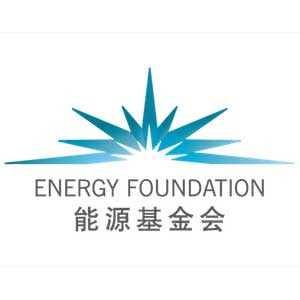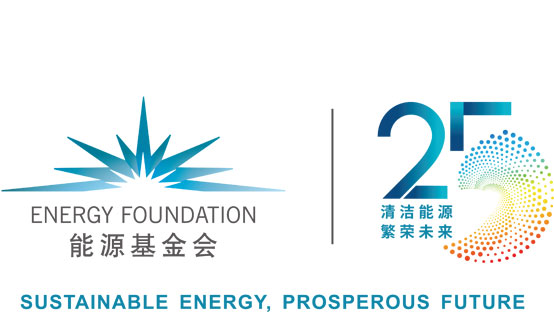Control on Coal Power Investment Should Remain Firm
Recently, the National Energy Administration in China announced in its “Risk and Early Warning for Coal Power Planning and Construction for 2022” that eight provinces are on red alert for an excess of installed capacity of coal power. This is a sharp reduction from 17 in its early warning for 2021 issued last year.
This shows that the situation of excess power supply across the country is significantly easing. And there are now speculations that this will possibly lead to a reversal of the trend of decreasing investment in coal power from the past several years, with the Chinese government loosening its chokehold.
During the past few years, investment in coal power continued to decline while the proportion of power generation from clean energy steadily increased, due to efforts on environmental protection and supply-side reforms. According to Dr. Yichuan Lu, the Program Director of the Clean Power Program at Energy Foundation China, it’s increasingly clear that there is a shortage of power supply during peak hours in some regions, and clean energy has so far not been able to fully meet the demand for more electricity, but adding coal-fired capacity is not the way to cope with the growth in demand.
China is still a developing economy, with rapid growth in electric energy consumption. From 2016 to 2018, the average annual consumption of electricity increased by 6.7% every year, which was much higher than the official forecast of 3.6–4.8%. In 2018, electricity consumption for the country reached 6.8 trillion kilowatt-hours (kWh), an increase of 8.5% from the year before. According to the latest official data from the National Development and Reform Commission, this trend has continued in the first quarter of this year, with a year-on-year increase of over 10% in the service and residential sectors.
And with the acceleration of urbanization and electrification prompted by a rise of people’s living standards, China’s demand for electricity will maintain rapid growth in the foreseeable future. Liu Zhenya, chair of the Global Energy Interconnection Development and Cooperation Organization and chair of the China Electricity Council, estimated that by 2030, the country’s electrification rate and total electricity consumption will reach 31% and 10.4 trillion kWh respectively, after taking into consideration of factors such as demand growth and energy efficiency improvement; for 2050, the figures are 52% and 14 trillion kWh respectively.
Faced with such a thirst for electricity, China’s current power supply is getting tighter and tighter. “It’s quite clear now that increased demand cannot be fully met by clean energy for the time being. For example, in 2018, nearly half of China’s new electricity demand was met by new clean energy, while the other half was still from fossil energy with coal being most prominent,” Dr. Lu said.
Although there is a clear trend in which electricity supply is getting outstripped by demand in China, with renewable energy still unable to fill the gap for the time being, Dr. Lu still believes that addition of coal-fired generators is not the way to cope with the growth of demand. It is not the only feasible response and far from an optimal choice.
From an economic perspective, the cost of renewable energy, such as wind power and photovoltaic (PV) solar power, has continued a sharp decline, with grid parity for renewable energy rapidly becoming a reality. In 2019, one year after China launched trials of grid parity projects for wind and solar power, the country will go one step further and give priority to such projects. The projects that still need subsidies will also significantly reduce on-grid prices under a mechanism of bidding. At the same time, distributed wind power and PV solar power from the user side have in fact become the most price-competitive power supply in the system. As more and more renewable energy sources no longer rely on external compensation mechanism, their growth will fully support new demand for electricity and quickly replace existing capacity of coal power. In fact, traditional energy sources are already facing competitive pressures from renewable energy and will likely be increasingly at a disadvantage.
On the other hand, the major issue with supply and demand over the foreseeable future will be more of a difficulty in achieving grid balancing, with the difference between peak load and base load getting bigger in most areas of China, increasing capacity of transmission lines between regions, and expanding demand for standby power due to renewable energy. Judging by these facts, the situation seems to require us to increase the number of units that are considered to be “adjustable output” such as gas turbines and coal-fired generators. However, as mentioned above, if these units are newly built, they will almost certainly face serious market competition with their inherent disadvantages and result in operating losses during their 20 to 30 years of life span. Then, the electric power industry may be faced with a serious problem of stranded coal-fired assets and locked into a path of high-carbon electricity.
Currently, there seems to be a dilemma with choices at hand. But in Dr. Lu’s view, the so-called dilemma is somewhat exaggerated. “If the issue with supply-demand in the short-term is mainly about insufficient backup power for increasing power generation during peak period, this is a problem of the balance of power system,” he said. “In this case, addition of newly installed capacity of coal-fired power is obviously not an ideal option since the potential for China’s demand side responses is still far from being realized. Currently, at this key juncture of the country’s transformation, the total cost of enacting changes on the demand side is much smaller with regard to solving the problem of grid balancing.”
Demand side management is about achieving a balance of the power system by reducing or delaying power consumption, such as prompting consumers to temporarily change their consumption pattern, reducing or shifting their demand to a certain period of time through price signaling or incentives, thereby ensuring balance of system. If there is still a certain amount of spare capacity that can be adjusted at any time, it could be used as backup power to cope with system stability issues caused by sudden changes in supply or demand. This type of integrated and controlled load has been dubbed “virtual generator” by the power industry for its ability to function similarly to power generation.
However, practices of demand side management have not been smooth sailing in China in the past. Clearly, there must be a flexible mechanism for setting prices that reflect the true value of electricity at different times in order to cause changes to consumption pattern and power load. Otherwise there will be no “virtual generators” that are cheap and convenient to use.
“The current implementation of peak and non-peak electricity prices is a relatively simple measure at the initial stage of demand side management. This kind of pricing scheme incentives consumers to use more electricity when power generation and power supply equipment are not at full capacity,” Dr. Lu said. “For users who use electricity during peak periods, the higher prices serve to dissuade some of them to use less or delay part of their consumption, thereby ironing out demand fluctuation.”
However, the peak pricing scheme is currently only on trial in some provinces and does not cover all consumers in China. And the 2–3 sets of fixed prices do not fully reflect real needs of the system. The mechanism is also of no help to the system’s needs for backup energy, frequency regulation, and other ancillary services.
Dr. Lu believes, “We need to find a more flexible and market-oriented pricing mechanism as part demand side management. For now and the foreseeable future, with regard to auxiliary products required by China’s power grid, we should change the unfortunate fact that they are mainly provided by various types of power sources free of charge while only traditional fossil energies, such as coal and gas, can become profitable. The system should be open to all of those who can provide auxiliary services needed by the system and compete on the basis of price and quality.”
Then, more tools and resources can be mobilized at a lower cost for balancing supply and demand of the grid. And the country can best avoid being forced into inefficiently investing in new coal-fired or gas-fired generators. At the same time, the utilization rate and performance of existing units can be improved in the short term. With rapid improvement of the competitiveness of the renewable energy market and an increasing level of adaptability of the system, we are not far from seeing renewable energy fully meeting future growth of China’s electricity consumption and even starting to replace current fossil-fuel capacity.
“Under this general trend, we need to establish and make full use of market-oriented mechanisms as soon as possible, break down the barriers of vested interests, and deal with short-term grid balancing problems at reduced social costs. And we need to be very careful when thinking about installing new generators of conventional energy so as to avoid a large number of stranded assets in the future,” Dr. Lu concluded.




